Dear creative friends,
Welcome to issue No. 65 of the StudioWorks Journal! I am thrilled to have you join us as we embark on an explorative journey through the vibrant intersections of movement, dance, and somatic practices within the art world.
This issue is dedicated to unraveling the profound connections between our physical expressions and creative processes. As artists, our bodies are more than just tools; they are reservoirs of history, emotion, and potential that inform and influence our creations. But how often do we consciously integrate this bodily wisdom into our artistic practices?
Let's dance through this exploration together, and may we emerge more connected to the rhythm of our spirits and the artistry of our bodies.
Thank you for bringing your open hearts and minds to this journey.
xo,

So you may be wondering, where do I start? To that, I say, wherever feels right to you. Each month we will have a theme, a creative affirmation, a power word, a color palette, sketchbook exercises, art projects, articles, recommended reading, and access to wonderful inspiration and resources. I want you to think of this as a delicious new magazine, you know the ones you occasionally splurge on, with soft, velvety pages, beautiful images, and inspiring content!
Each issue will invite you to explore your creative practice in whichever way works for you. Experience each issue at your own pace. Take what resonates with you and put the rest aside for another time.
Grab a cup of something lovely and dive in.
To flow, to move, and to dance are traits most artists would bestow upon the brush in their hand as they engage in the creation process. There is a rhythm, an elegance, to lines that move as if by their own force across the canvas. It’s no wonder, then, that the visual arts of painting and dance have always shared a dynamic relationship. They are kindred acts.
From antiquity to the present, artists have portrayed dancers. The watchful eye of a creative can not help but be snared by the poetry in motion of a skilled dancer. The raw emotion, physical grace, and astonishing control exhibited can be nothing short of stunning. For those in the business of capturing beauty, this is a place where business is good. If you’re ready to be moved, join me in exploring dance and art history.
The earliest artistic representations of dancers harken from archeological finds in India some 9,000 years ago. The Egyptians also depicted dancers as long ago as 3,000 BCE. In fact, along with plants and animals, people in motion have been the source of creative inspiration from art’s inception. Not only is dance central in art, but it is also a likely precursor to written language, serving as a way to transmit and retain cultural history.
When mythology reigned supreme, as in the Romantic era, artists such as William Blake represented the mores of the day in paintings such as Titania and Puck with Fairies Dancing. However, it wasn’t until the 19th century that artist really turned up the heat and began taking up dance as a central theme of their work.
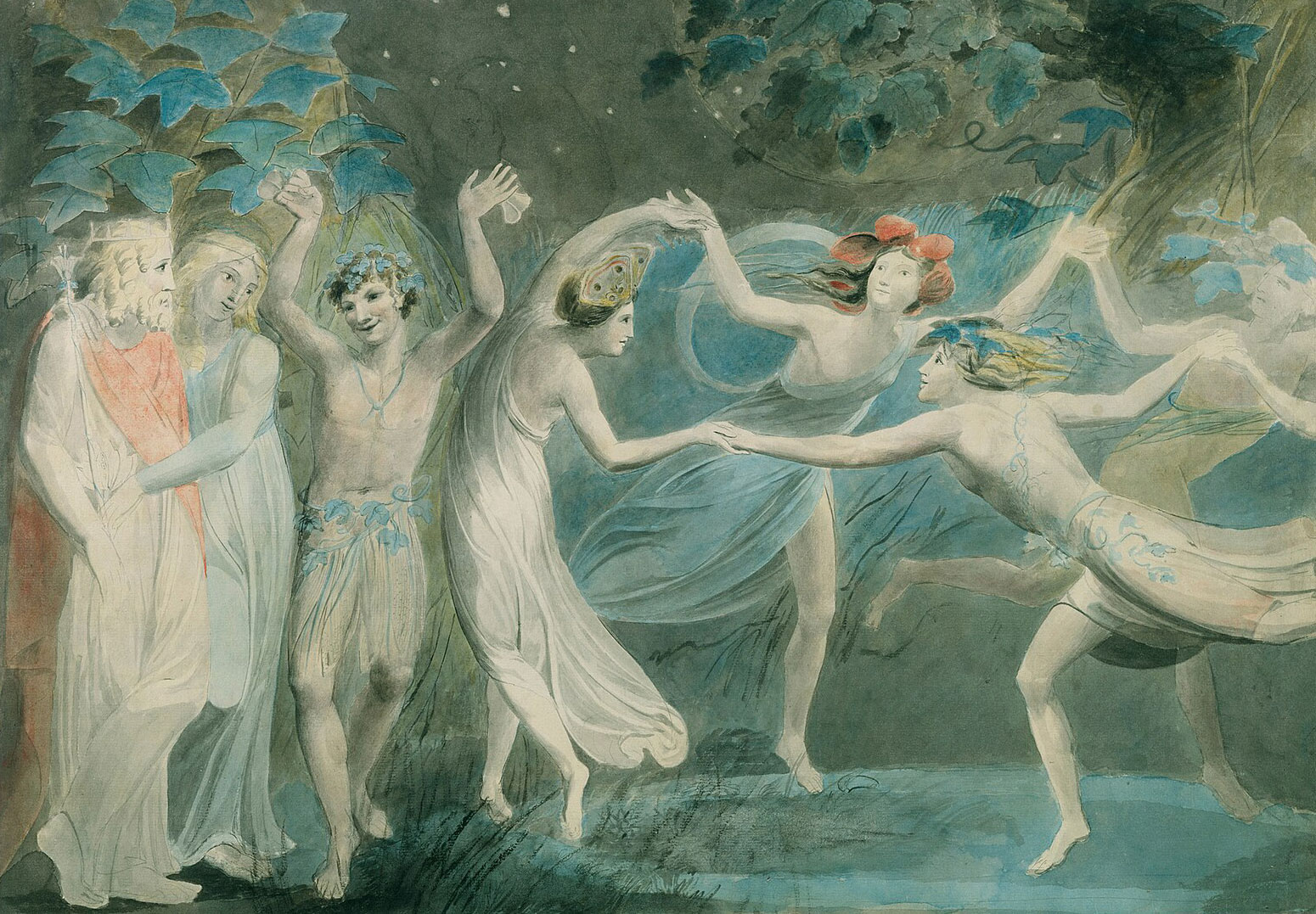
Titania and Puck with Fairies Dancing
William Blake, 1786
As ballet became more refined and widespread, it generated multiple avenues for creative expression, from stage sets to costuming to capturing the performers themselves. With this rich well of inspiration to draw from and the necessity of so much input from artists on theoretical as well as practical levels, where skilled dance occurred, artists were always near at hand.
For example, Picasso, Matisse, Chanel, and Baskt created sets for Les Ballets Russe. And Degas, who hailed from a family of music lovers and was immersed in dance from a young age, made over 1500 art works of ballet dancers in his lifetime. In addition, using a rare advantage afforded a woman of the era, Laura Knight worked her way backstage, befriending ballet dancers and gaining the unique POV to create such intimately perceptive pieces as A Ballet Dancer and The Ballet Girl and the Dressmaker.
Knight spoke to the power of this experience in her autobiography, saying, “I firmly believe the most valuable study I ever have was in my attempt to draw ballet. Never before had I tried to make the pencil speak in a language of its own …the best study I have never had was trying to draw the moving figure.”
Other renowned artists also have famed pieces with dancers as the focal point, such as Renoir’s Impressionist piece Bal du moulin de la galette, Gino Severini’s work Dancer in Blue that falls between Cubism and Futurism, and the Fauvist paintings of the same name, The Dance, done three years apart by first André Derain and then Henri Matisse. The Pop Art movement also has well-known works on dance, such as Alex Katz’s Paul Taylor Dance Company and Keith Haring’s Untitled (Dance).
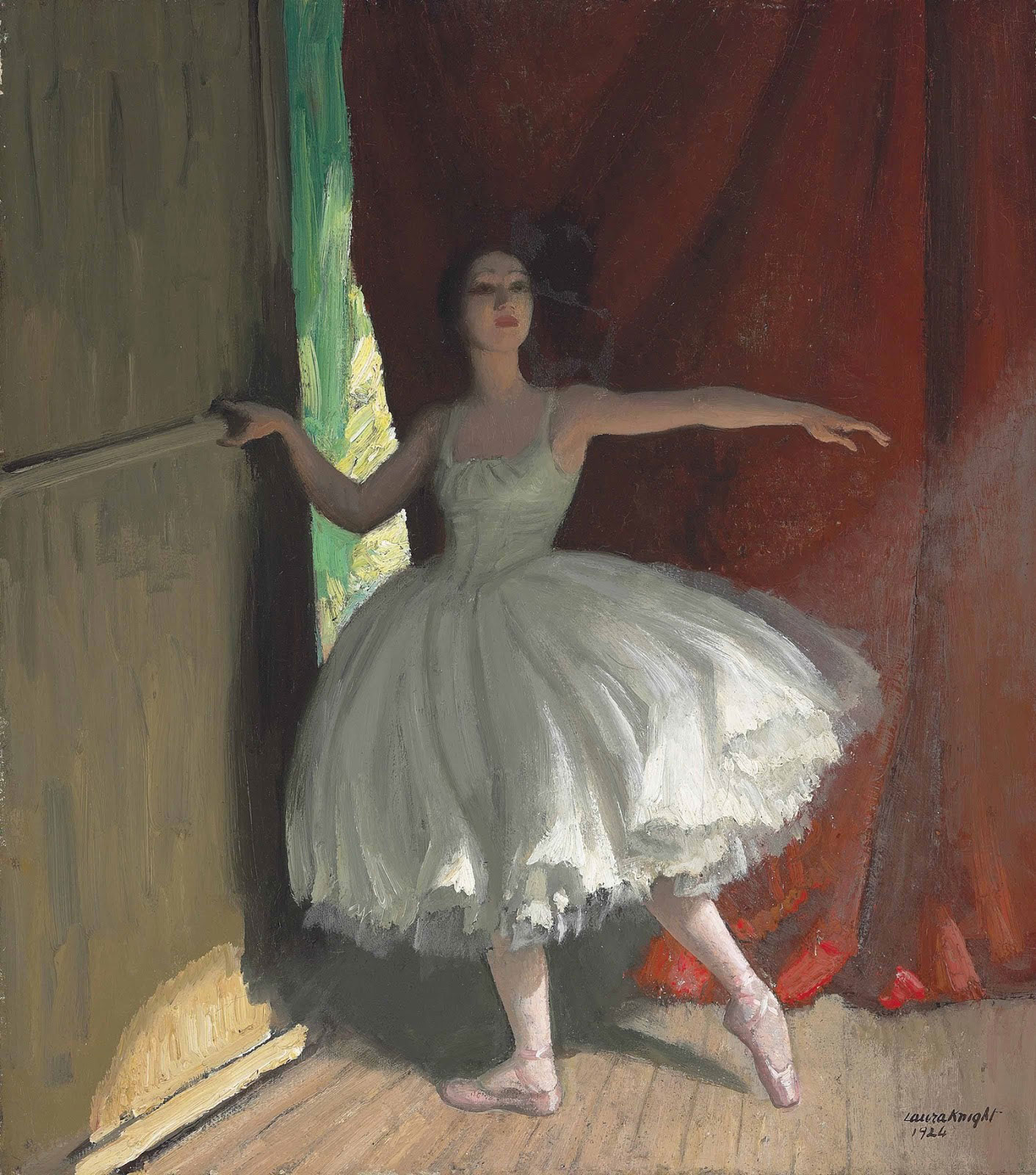
A Ballet Dancer
Laura Knight, 1924
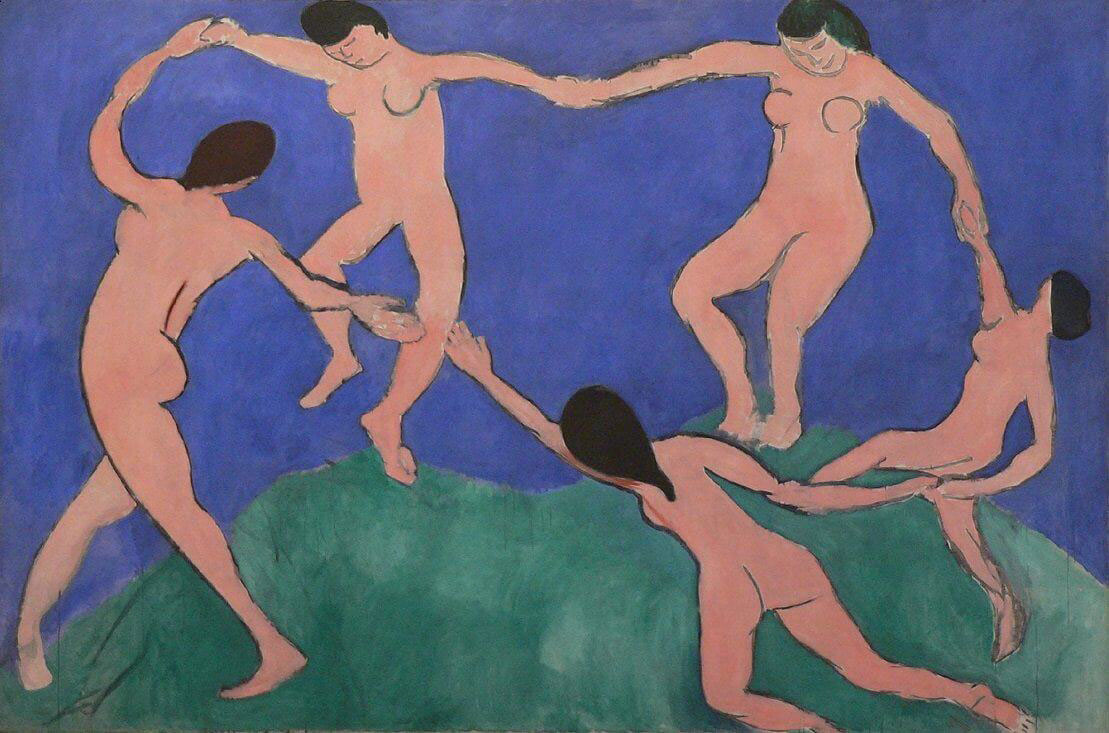
The Dance
Henri Matisse, 1910
Throughout human evolution, there has always been a tight relationship between dance and painting. The grace and allure of the human form in motion capture the imagination and set the brush prancing across the canvas. Artists love to depict dancers, whether working on cave walls, creating sculptures, constructing beautiful theatrical sets, or painting portraits.
It makes sense; there is something raw and honest about dance. Even at its most refined, it expresses aspects of the psyche that language simply cannot touch. Painting, too, can accomplish this direct form of expression. Together, the two art forms are a creative tour de force. Recognizing this, there’s no reason to believe this duo’s sizzling tango will end anytime soon.
In our contemporary world, the concept of 'flow' has gained significant traction. It’s a term that resonates with many in the art community because it encapsulates a state of being that blends pleasure with productivity. Creatively, to be in flow is to align with the rhythm of the universe, effortlessly harnessing the energy that permeates all things. It’s a state of complete absorption in our actions, a sweet spot where our skills and focus converge, transcending all boundaries.
Dance, at its core, is a tangible embodiment of the flow state. It's the body in motion, a symphony of strength and grace, fluid and weightless. The more skilled the dancer, the more this fluidity and weightlessness shine through. Yet, even those who don't consider themselves 'dancers' can attest to the sheer liberation and joy that washes over them when they surrender to the music, allowing their bodies to become vessels of expression.
As artists, we can utilize the gifts inherent in dance to find our flow and, in so doing, improve our art. Being in touch with our bodies is a way to foster harmony and balance. Creating from this state of equilibrium allows us to tap into the best of ourselves. Join me in exploring ways to integrate somatic practices into our painting process, breathing new life into our work.
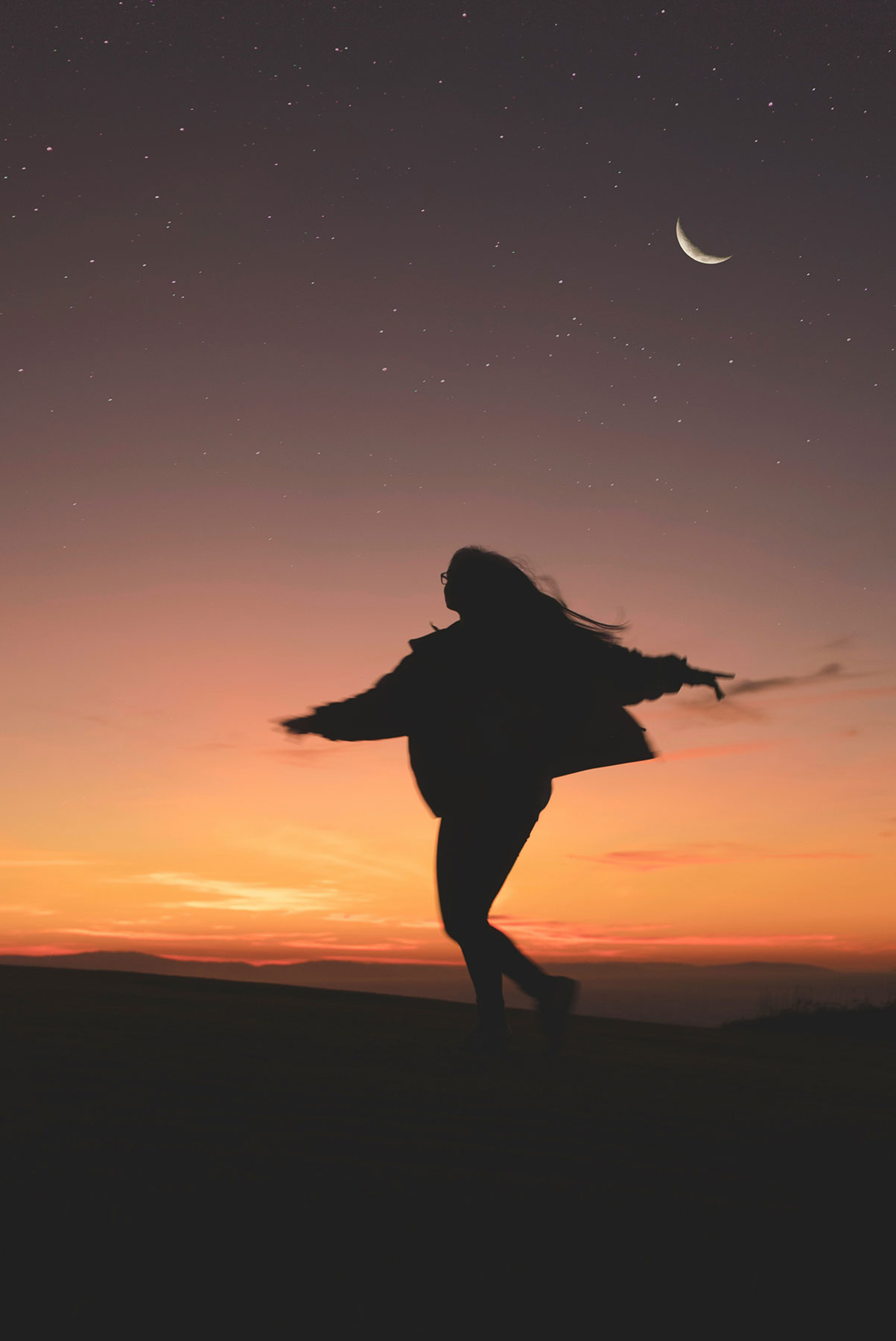
There are many ways to tap into dance (no fancy shoes required) as a source of artistic inspiration. You can DIY, as in shimmy, shake, sashay, or salsa letting the movement of your body free your muse. Or, you can observe others, allowing their skill and beauty to ignite your imagination. Better yet, try both, noting the difference between being a participant and being an observer.
Listening to different music, attempting different dance steps, and playing with free-form movements vs. choreographed ones will all bring different feelings, emotions, and perspectives to the foreground. Watching a variety of performers and dance styles should do the same.
Jot down what comes up for you, what types of movement captivate you, and which leave you cold, both in your observations and your enactments. Does dancing make you want to watch dancers? Does watching dancers make you want to move? How do you feel? Are there colors or patterns that come up for you?
After dancing or watching dancers do some sketching, playing with lines that reflect movement. Notice how zig-zags can express excitement, diagonal lines can show the direction of movement, and curved lines can denote natural, peaceful activity and convey emotion. Make like Van Gogh and use circular patterns to express a sweeping sense of motion.
Apply these reflections to your next piece, determining if you want it to include physical motion, such as a dancer spinning, or implied motion, such as a body in flight, leaving the viewer to imagine the landing. Play with color using variation in tone to convey movement. Consider the inherent motion in specific brushstrokes, noting the openness and spontaneity of gestural movements vs. the constraint of short or controlled brushwork.
In short, pay close attention to what types of movement are evoked by how you hold the brush, the colors you choose, and the behavior of the subject you select. Your dancers don’t have to be people, either. Trees moving together in the breeze, swallows swooping past one another in an arial swing, and butterflies weaving together in an upward spiral convey signals we see but scarcely grasp, and it's all a dance. Choose what moves you and portray it your way.
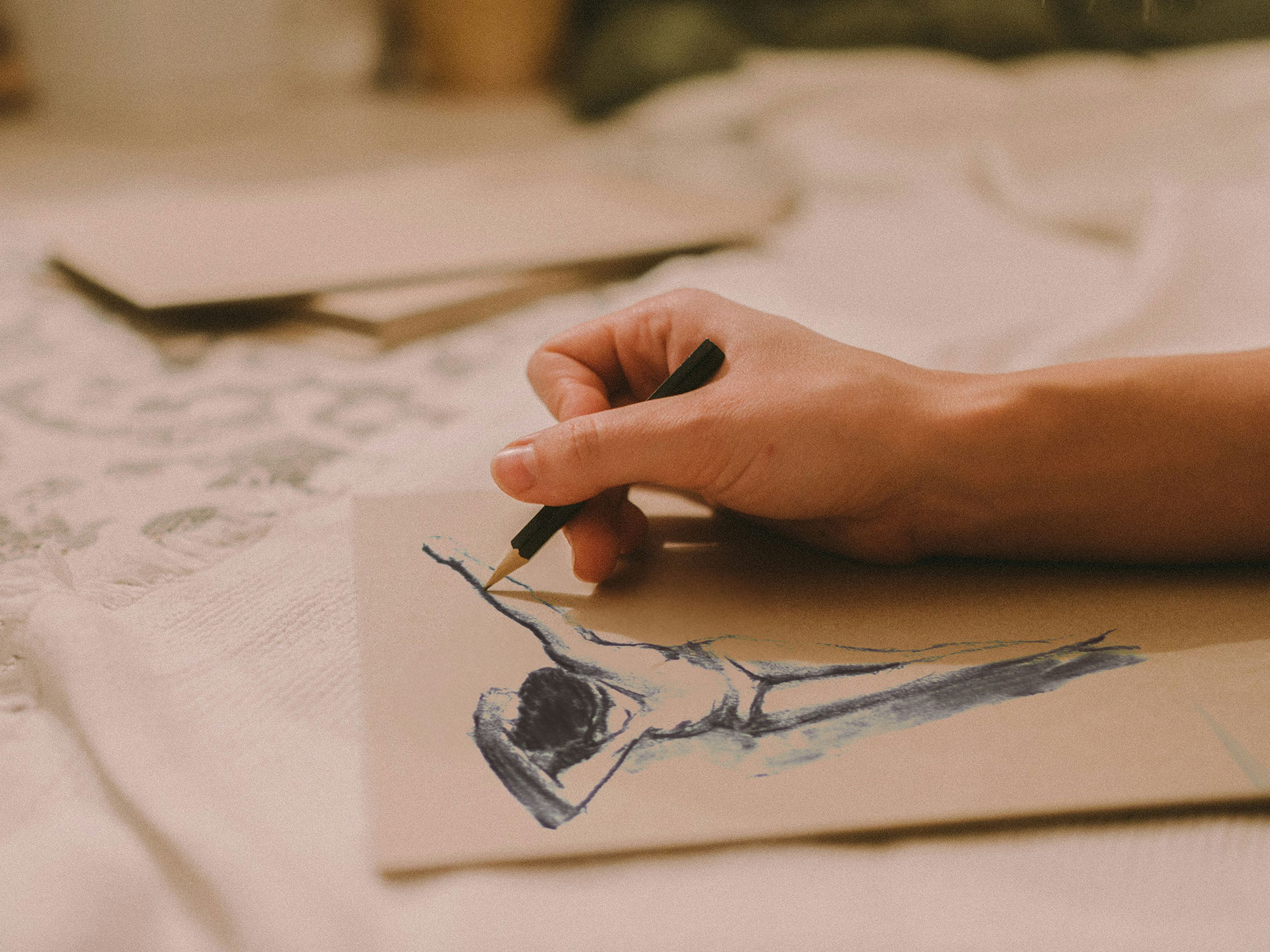
To get in the flow, it helps to move and better yet, to dance. Moving our bodies fluidly, especially to music, unlocks our creative force. There are many ways to do this, but each of us has our own rhythm. Discovering yours will open and expand your process, infusing your work with newfound inspiration.
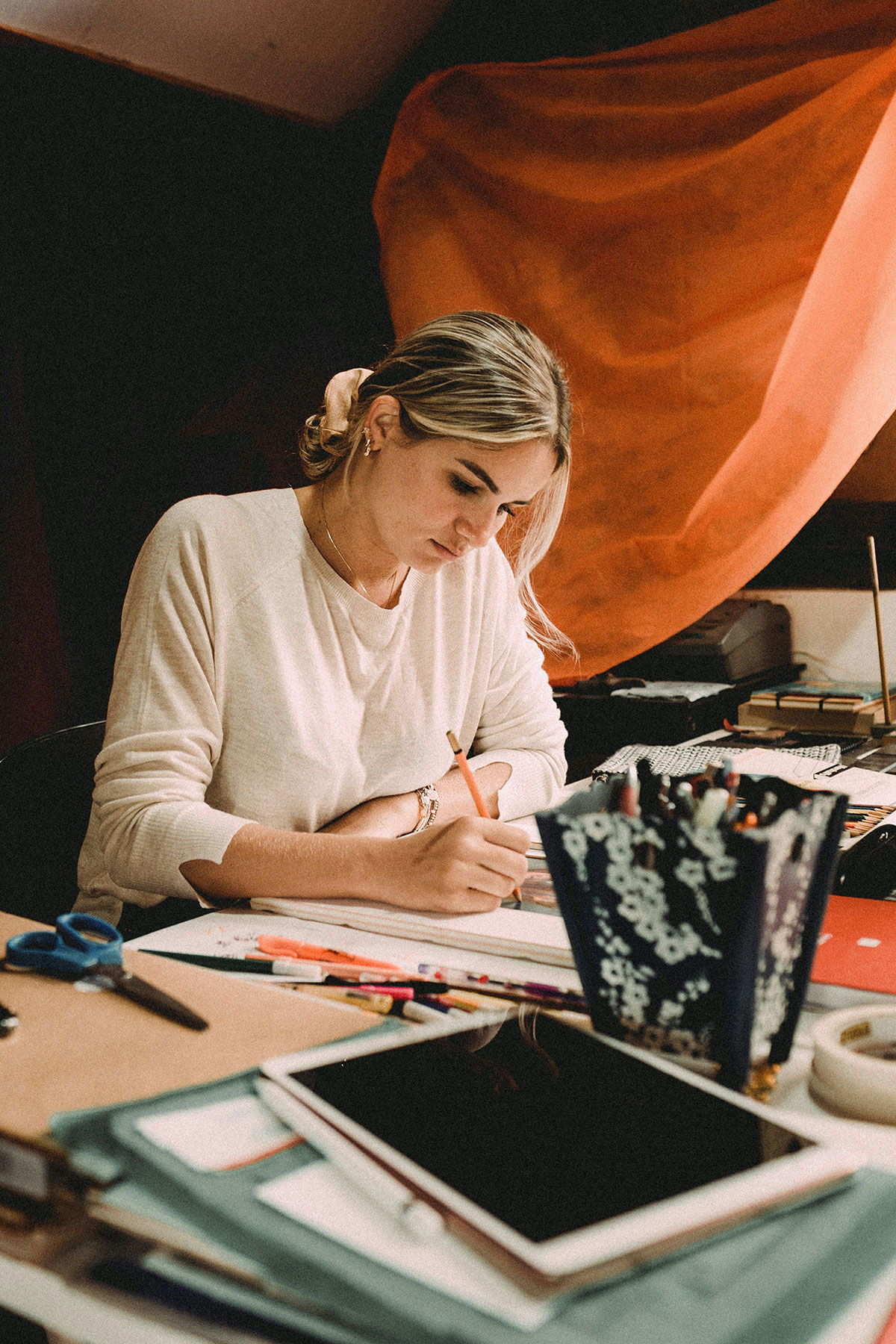
The dictionary definition of "embodiment" generally pertains to a tangible or visible form given to an idea, quality, or feeling, or the representation or expression of something in a tangible or physical form.
So, how does this word relate to us and our theme(s) this month?
• Movement and Dance: Physical Expression: Dance is essentially the embodiment of emotions and narratives through movement. Each motion and pose represents a concrete expression of internal states, stories, or aesthetic explorations. It makes abstract concepts (like emotions) tangible and visible.
• Somatic Practices: Mind-Body Integration: Somatic practices focus on the awareness of the body's movements and sensations and their integration with mental and emotional states. This practice embodies the idea that to fully understand and experience emotions and thoughts, one must perceive them through physical sensations—literally, giving body to feelings.
• Artistic Practice: Manifestation of Ideas: In art, embodiment can be seen in the process of creating physical (or digital) forms of artistic expression that originate from abstract ideas. Whether it’s a painting, a sculpture, or a performance, each work is an embodiment of the artist’s thoughts, feelings, cultural identities, and creative visions.
Holistic Expression: Art often requires the artist to engage fully, not just mentally or emotionally, but physically. This holistic involvement is a form of embodiment itself, where the artist's body in making art becomes a vessel for expressing the integrated experiences of their senses, emotions, and intellect.
In the context of our themes, "embodiment" beautifully encapsulates the profound connection between the artist's internal experiences and their artistic outputs. It speaks to the transformation of intangible ideas into tangible expressions, bridging the gap between the conceptual and the physical, the felt and the seen.
Let’s tap into our creative intuition and do some self-reflective work inspired by our theme. Below you will see our month’s Oracle/Tarot card spread. But fear not, if you are not one drawn to using oracle or tarot cards, no worries, just use the accompanying reflective questions as writing prompts for your journals!
USING THE SPREAD
To use this spread, shuffle your oracle/tarot deck while focusing on your current creative processes and physical sensations. Lay out four cards in a row from left to right, corresponding to the positions listed above.
Take time to interpret each card based on its position and the questions provided. Reflect on how these insights can inform your practice, improve your relationship with your body, and enhance your creative outputs.
This spread is designed to create a holistic view of your artistic and somatic journey, enabling a deeper understanding and integration of body and mind in creative expression.
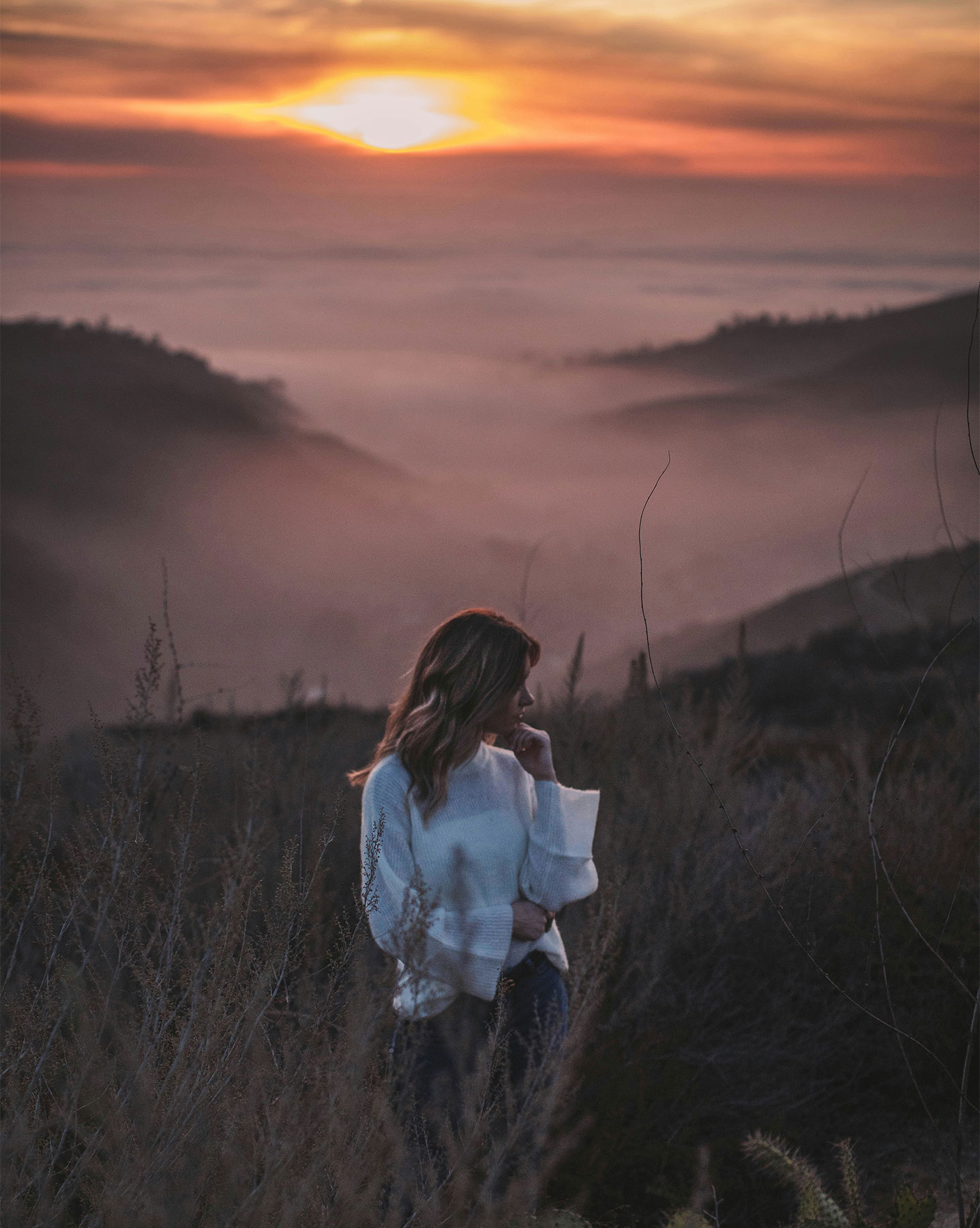
This wonderful meditation will help calm your nervous system and relax into your body. It’s the perfect accompaniment to our theme this month so gift yourself 20 mins or so to enjoy this. Here’s a little more information from our Meditation Master - Rachel Hillary.
If you are feeling in a heightened or anxious state right now maybe just listen through once, more casually before joining in. We begin with a brief informal talk followed by a guided meditation. I will lead you into a relaxed state through breath and softening, allowing our bodies to find a safe place for healing and restoration, balancing our emotions and vibration. There is a relaxed quality to this guided experience so just get somewhere cozy and settle in with ease.
lots of love,
Rachel
Each month we will have a positive affirmation. I recommend you print out this affirmation and put it in your sketchbook or somewhere in your studio. Recite the affirmation out loud each time you show up to create. Saying words aloud is powerful and can begin to re-write some of our own limiting beliefs or calm our fears. Try it now…
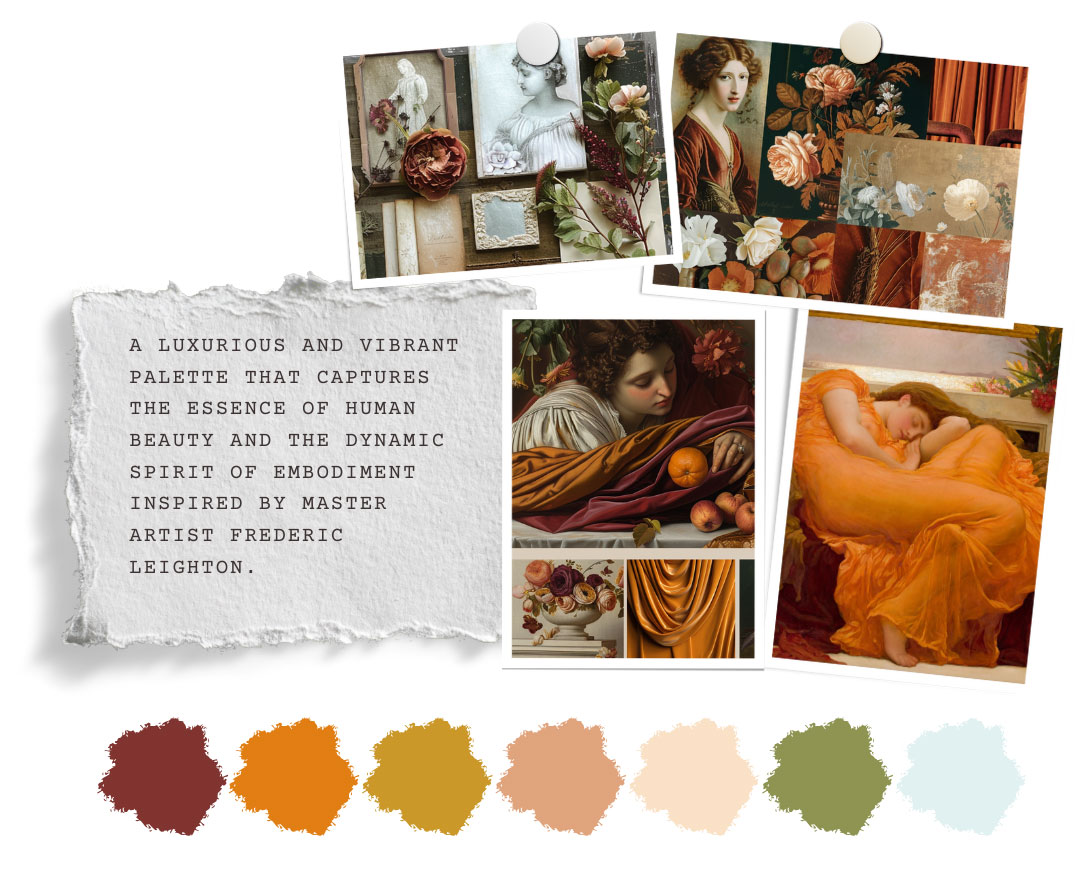
In this edition, we draw inspiration from the sumptuous palette of our master artist, Lord Frederic Leighton, whose masterful depictions of classical antiquity and romanticism are echoed in the colors we've chosen to represent our theme of embodiment, movement, and creative expression.
Rich oranges and burgundies evoke the depth and passion of physical artistry, complemented by the soft neutrals of creams and beiges that provide a calm, grounding backdrop, inviting mindfulness and presence. Warm, burnished golds and ethereal pale blues reflect Leighton's fascination with the sublime and the spiritual, highlighting the transcendent qualities of our creative pursuits. Dusty roses and soft pinks, alongside moss and olive greens, balance this palette, offering nuances of growth, renewal, and the tender vulnerability of the human form.
Together, these colors not only pay homage to Leighton's artistic legacy but also enrich our exploration of the dynamic interplay between our physical expressions and creative impulses.
In this month’s master artist study, we delve into the life and legacy of Lord Frederic Leighton, an icon of Victorian art whose profound engagement with classical themes beautifully harmonizes with our focus on embodiment, movement, and creative expression. Leighton, renowned for his historical and mythological works, masterfully captures the grace and fluidity of the human form, making his paintings resonate deeply with the dynamics of dance and somatic practices. Let’s learn more together…
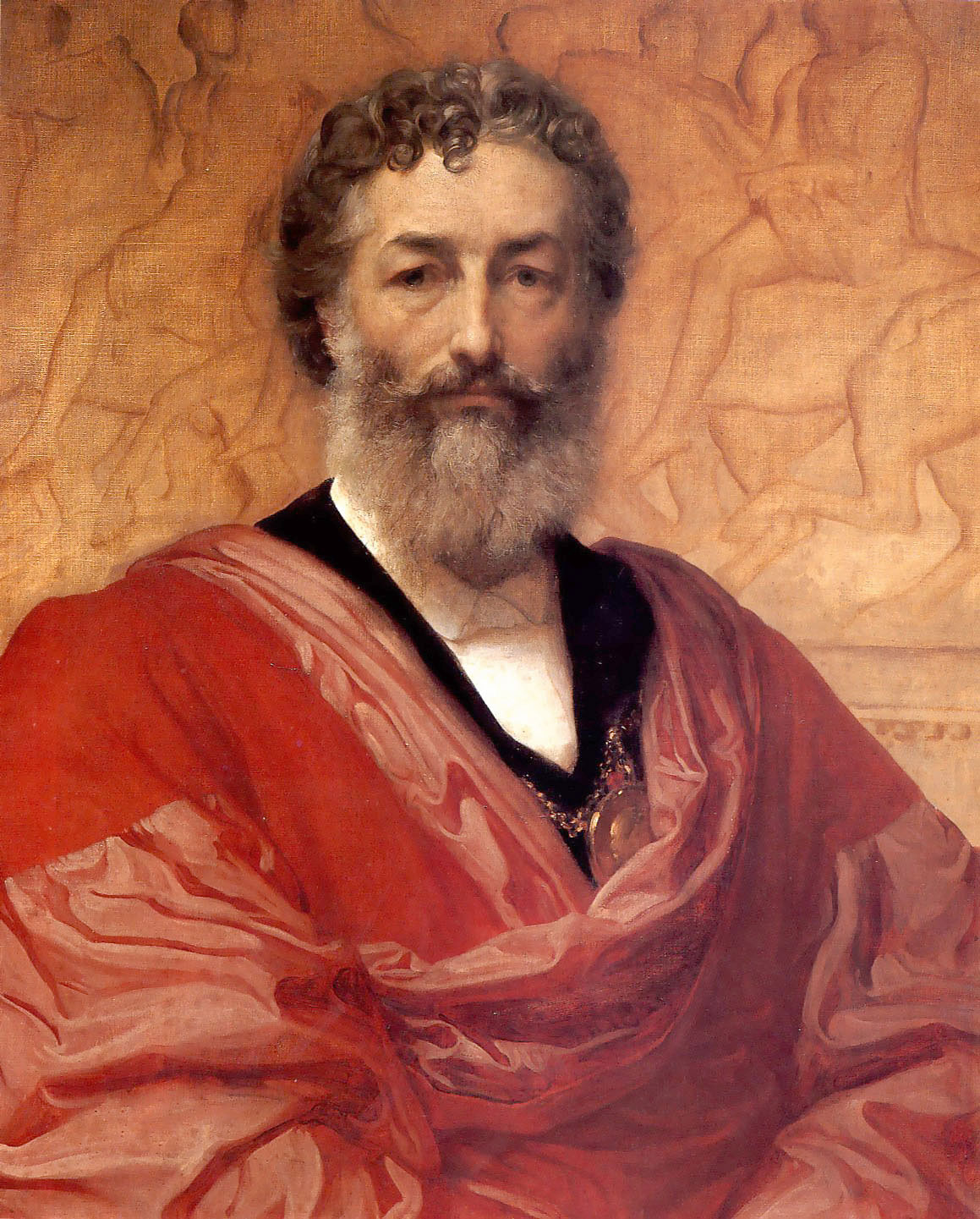
Born in Scarborough, England, in 1830, Frederic Leighton emerged as a pivotal figure in Victorian art, celebrated for his exquisite depictions of classical antiquity and his profound influence on the aesthetics of his time. A prodigy nurtured in the culturally rich environments of Europe, Leighton’s artistic education spanned across the continent, from the academies of Frankfurt and Rome to the studios in Paris. His global perspective and academic rigor were evident throughout his career, which saw him rise to the presidency of the Royal Academy of Arts, a knightood, and ultimately, a peerage—the only British artist to have been awarded this honor.
Leighton’s style is characterized by its idealistic portrayal of the human form, often imbued with a sense of movement and poise that echoes the classical sculptures of ancient Greece and Rome. His works, such as the luminescent “Flaming June,” the dramatic “The Fisherman and the Syren,” and the serene “The Garden of the Hesperides,” capture not only the beauty of the human body but also the emotional and narrative depth of these mythological and historical moments. His use of vibrant color palettes and delicate textures enhances the visual impact of his art, making each piece a window into the transcendent qualities of human experience.
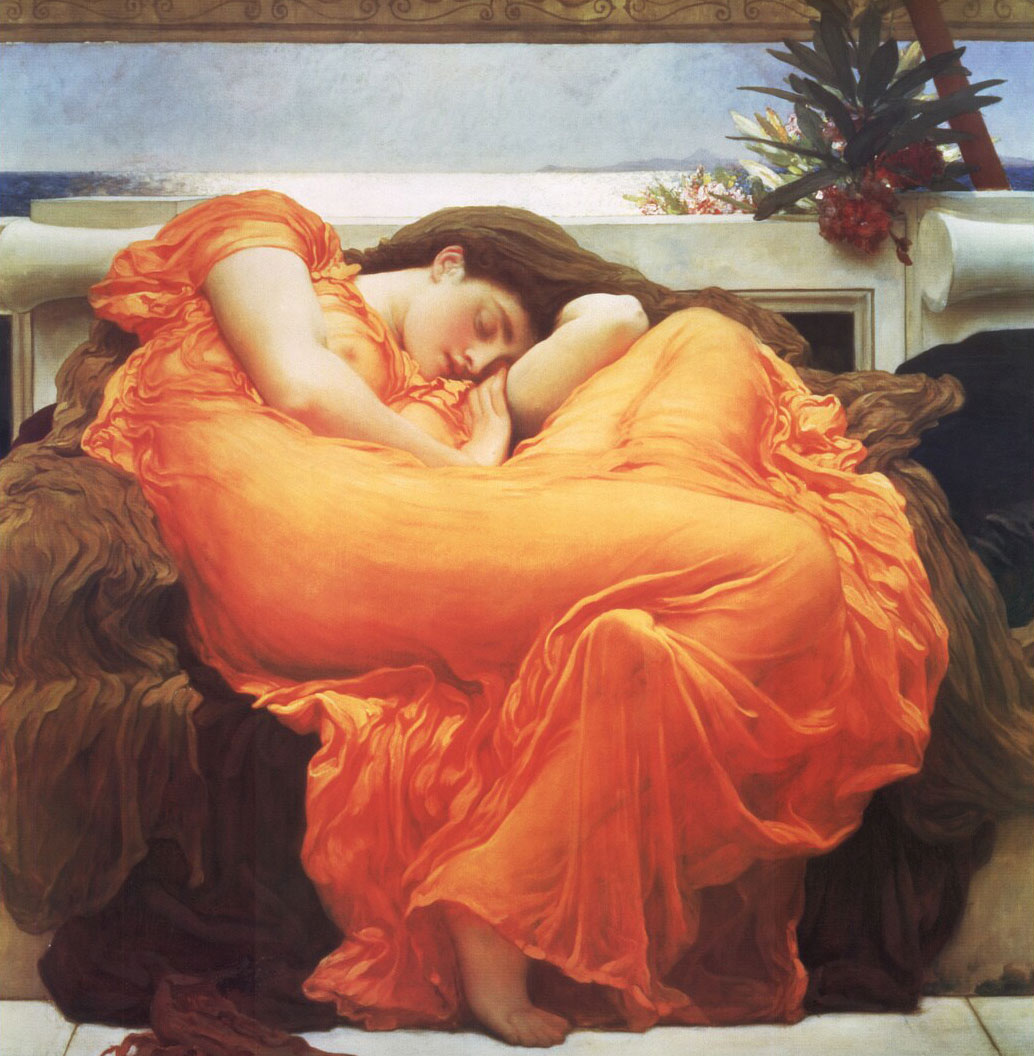
Frederic Leighton, 1895
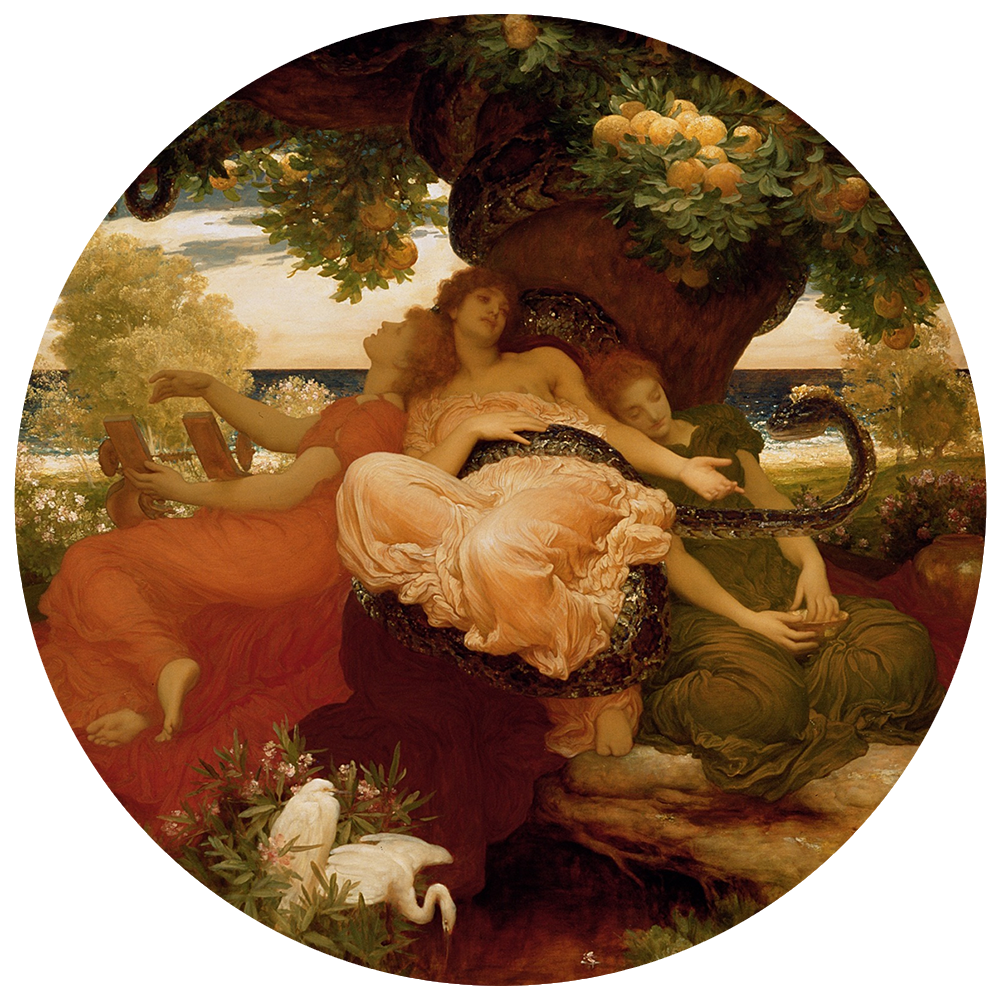
The Garden of Hesperides
Leighton’s connection to the themes of embodiment, movement, and creative expression is deeply woven into his artistic approach. His figures are often caught in mid-motion, their bodies a testament to the flow and grace of natural human gestures. Leighton’s work celebrates the physical form, not just as an object of aesthetic pleasure but as a conduit for emotional and spiritual expression. This celebration is particularly evident in his meticulous attention to the way clothes drape over flesh, how limbs articulate in space, and how expressions convey complex psychological states.
Throughout his career, Leighton remained committed to the idea that art should ennoble the viewer, a philosophy that earned him both acclaim and critique in the changing tides of artistic preference at the turn of the century. His legacy, however, extends beyond his masterpieces. It is reflected in his passionate advocacy for art education and his efforts to elevate the status of British art internationally. Today, Leighton’s work is not only admired for its formal beauty and emotional depth but also studied for its synthesis of movement and expression, principles that continue to inspire artists exploring the dynamics of the human form.
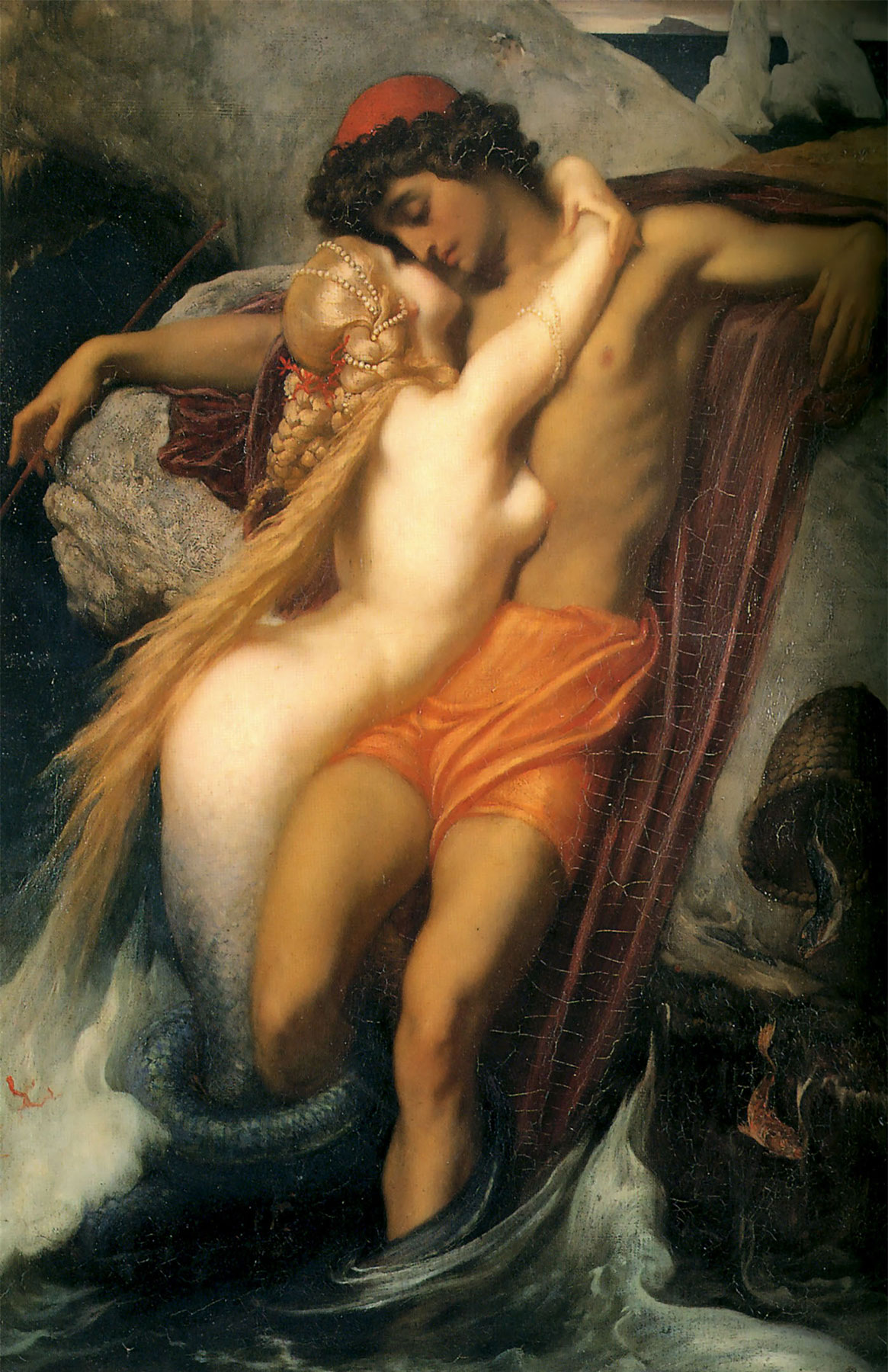
The Fisherman and the Syren
For us modern creatives, Leighton’s work offers rich insights into the use of embodiment in art. His ability to capture the subtle nuances of physical expression teaches today’s artists to look beyond the surface, to explore the rhythms of bodies in space as dynamic narratives full of potential and meaning. As we delve into Leighton’s world, we see a canvas where each stroke and contour vibrates with the life forces it seeks to depict, reminding us that art, at its best, is a dance of colors, shapes, and souls coming together in the light of shared human experience.
In exploring Lord Frederic Leighton’s artistic journey, we not only celebrate his legacy but also connect with the timeless quest to understand and represent the human spirit through the grace of movement and the art of embodiment. His life’s work encourages all who engage with it to consider deeper synchronicities between body, motion, and creative expression in their own artistic endeavors.
Play a piece of music that resonates with you and sketch the movements inspired by the rhythms and melodies you hear. Let the music guide your hand to create flows and forms that feel like dancing on the page. You can use your favorite mediums or simply a pencil or pen. It might even be fun to create this on an old music sheet if you have some on hand! Don’t have any, no worries you can print some out!
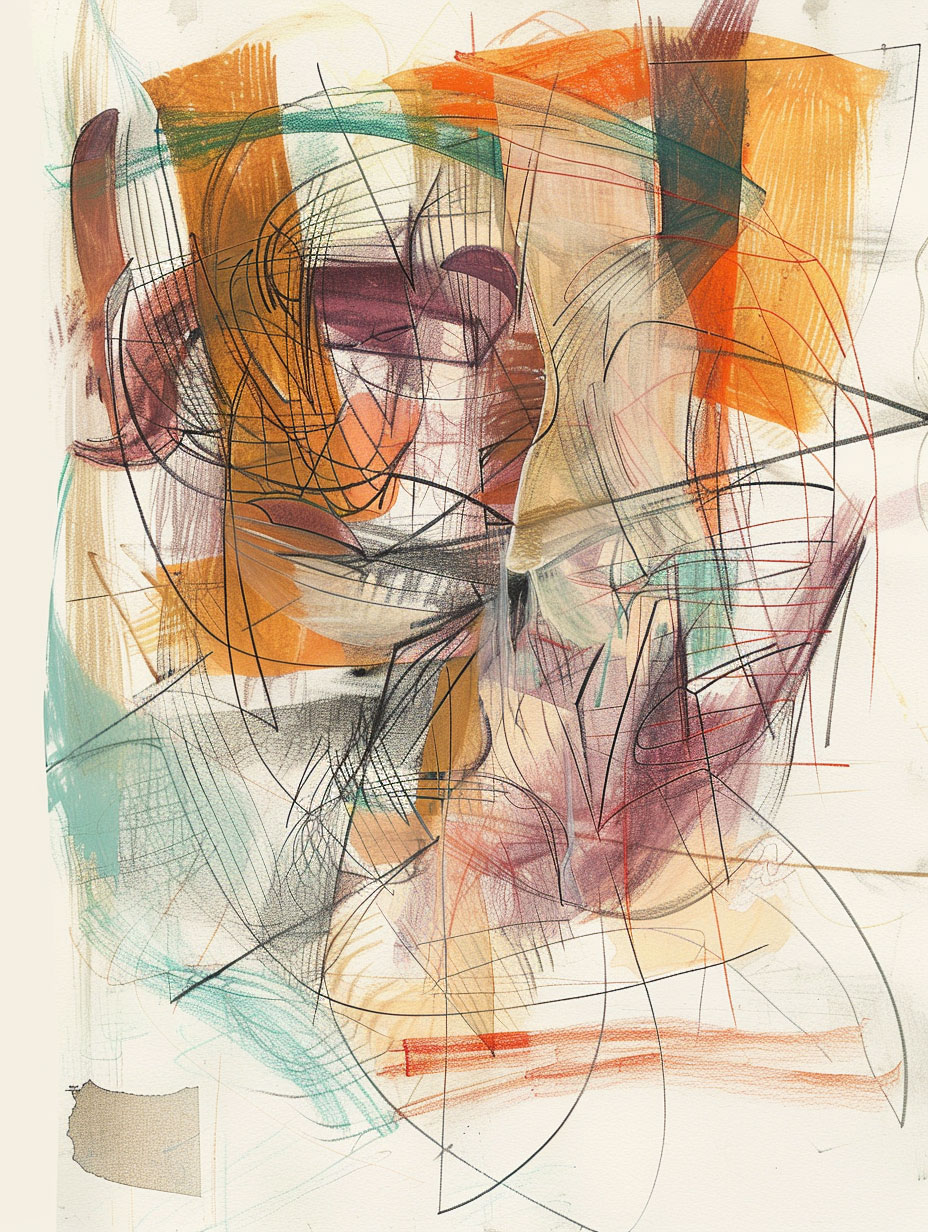
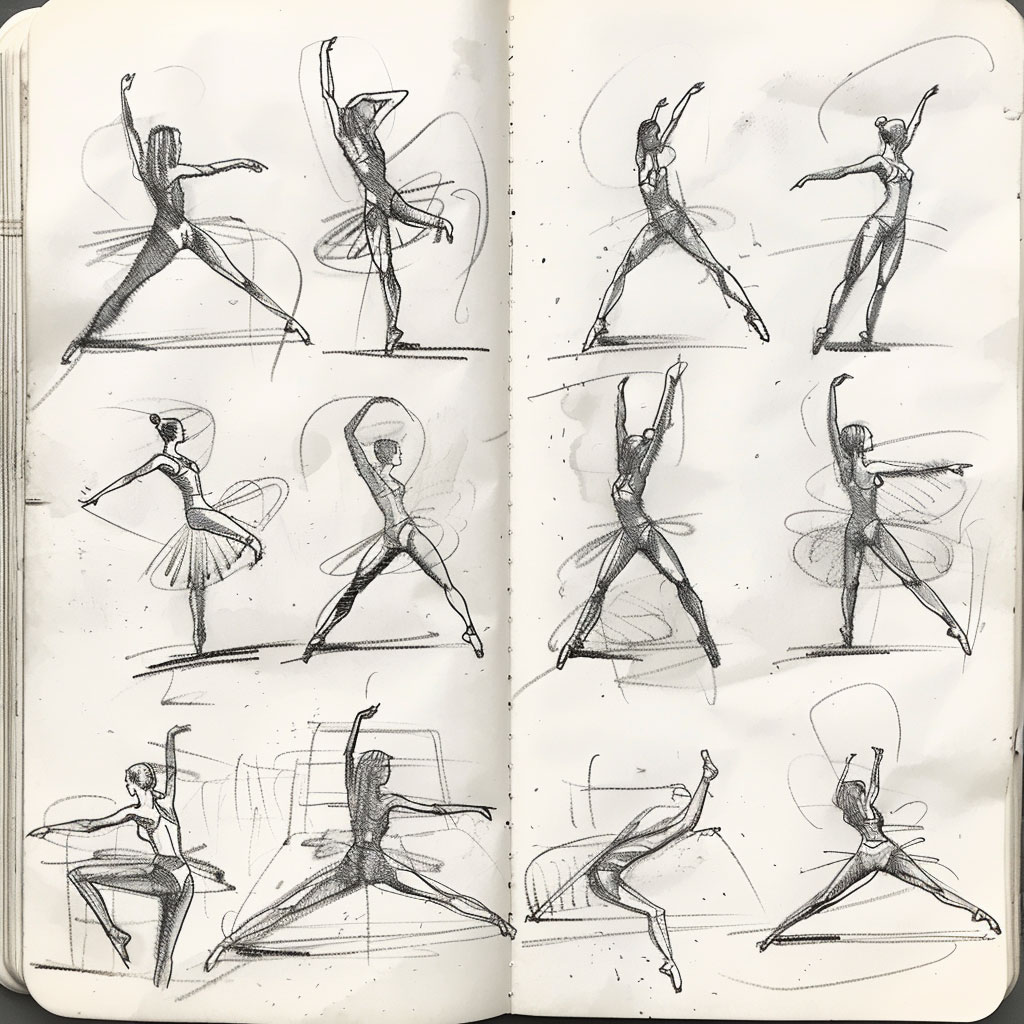
Sketch a series of quick poses focusing on different gestures and actions. Use a timer to limit each sketch to two minutes. Concentrate on capturing the essence of the pose’s movement rather than detailing the anatomy accurately.
I have curated a gallery of reference images for you here:
Watch me do this inside the class Lovely Dancer here:
Create inspired by a piece of Frederic Leighton’s work or do a master study and try and emulate the style, color and expression of Leighton’s pieces. Remember the most important part is to connect with the artist, not perfectly replicate his work. You could even do a small study of just one part of his paintings. Focus on how he creates the sense of lyrical movement in his figures and the fabric adorning the human form. I love this piece in particular since you can really sense the wind and feel the drapery fluttering. You can see more work by Frederic Leighton and zoom in to closely study his pieces here:
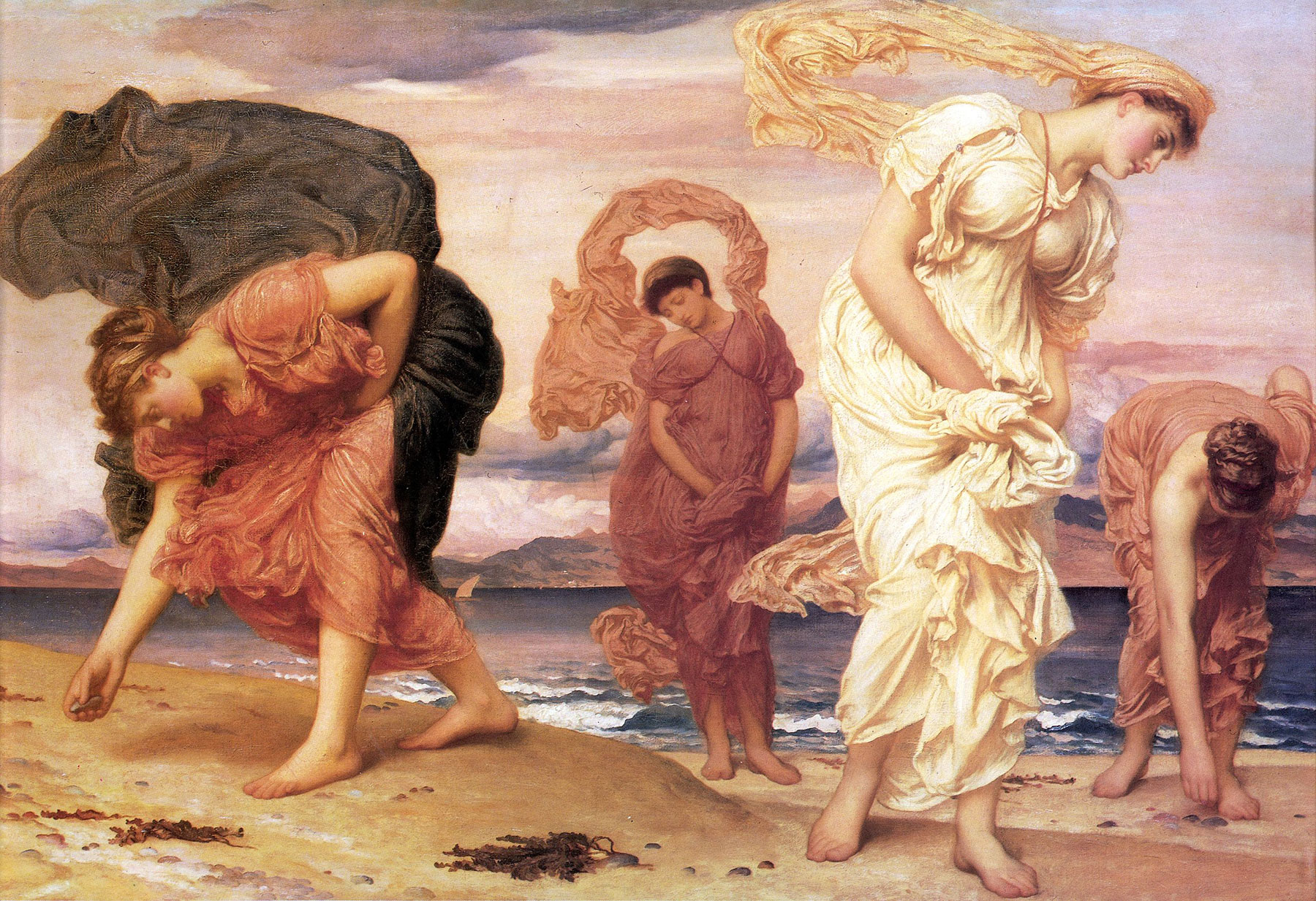
Greek Girls Picking up pebbles by the Sea
by Frederic Leighton, 1871
Embark on a journey to capture the grace of a Prima Ballerina in this Degas-inspired project. Begin by selecting a ballerina reference from our curated Pinterest boards that truly speaks to you. Utilizing skills from previous figure drawing and pastel studies, you'll start with a monochrome sketch before gradually introducing soft color accents.
Find tranquility in the artistic process, patiently overcoming any initial apprehension. Express your artistic vision and share your own unique rendition of a Prima Ballerina with us!
You can also listen to this month’s issue of the Studioworks journal. I find I love listening to books, podcasts and music while I draw, paint or go on a long walk. Enjoy.
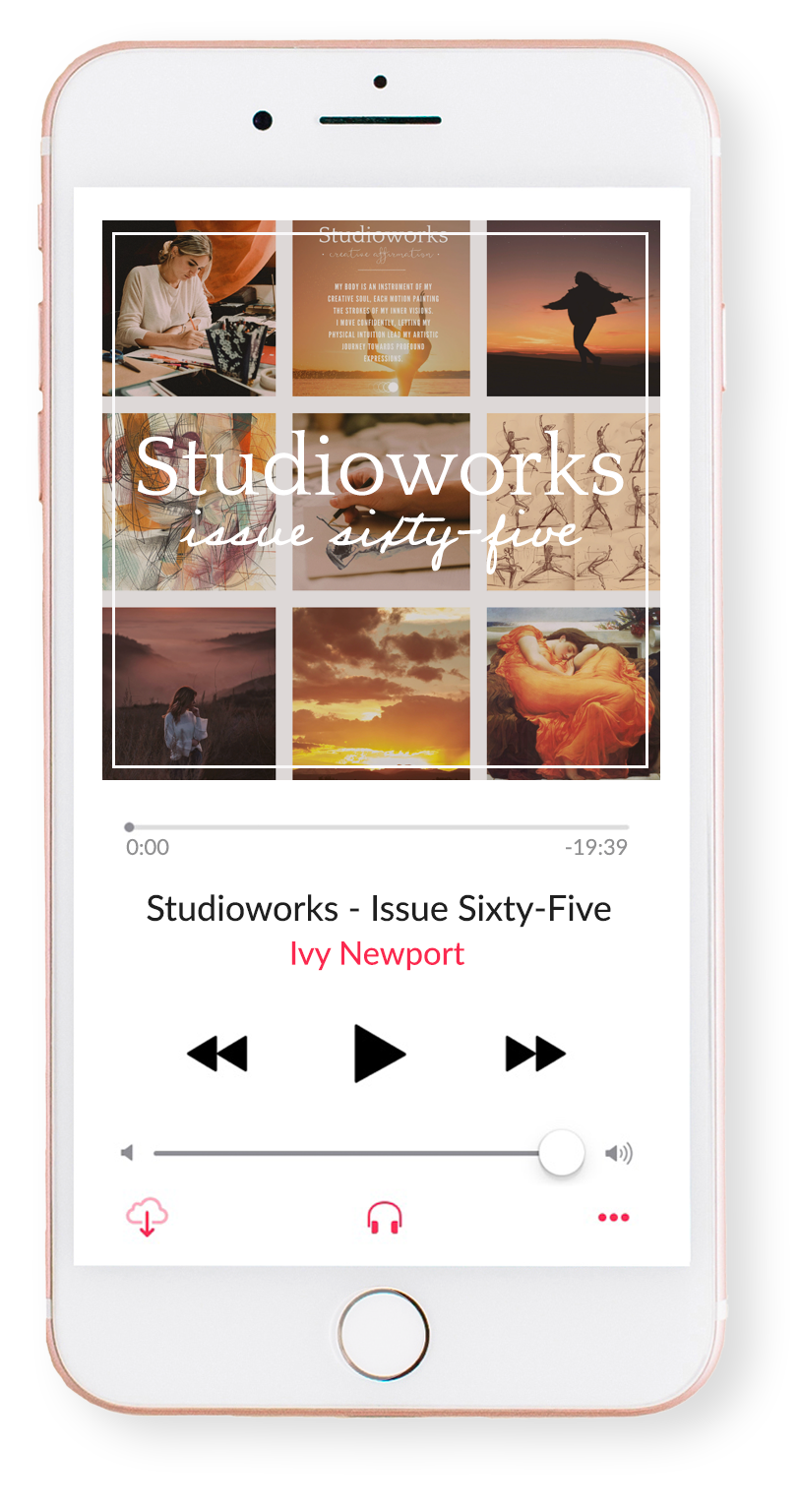

One of my favorite things to do is to curate inspiration. From Pinterest boards to books, resources, playlists and more - I love to share anything that might facilitate learning, expansion, and sparks of curiosity! Being an artist, we naturally crave these things so here are some of this month’s picks from me to you.
I had so much fun curating this list. I hope you enjoy!!
Here are just a few of our fantastic classes! I highly recommend checking them out if you haven’t already. Enjoy!